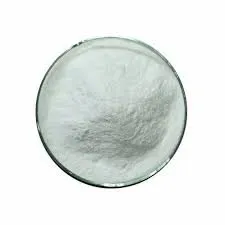
Oct . 31, 2024 01:18 Back to list
hydroxyethyl cellulose synthesis
Synthesis of Hydroxyethyl Cellulose An Overview
Hydroxyethyl cellulose (HEC) is a non-ionic water-soluble polymer derived from cellulose, primarily utilized for its thickening, gelling, and film-forming properties. The synthesis of HEC involves the etherification of cellulose, a natural polymer obtained from plant cell walls, with ethylene oxide. This article delves into the process of HEC synthesis, emphasizing its significance and applications.
The process begins with the extraction of cellulose, usually from wood pulp or cotton linters. The cellulose fibers are purified to remove any non-cellulosic components, ensuring a high degree of polymer purity. Once purified, the cellulose is typically suspended in an alkaline solution, which activates the hydroxyl groups on the cellulose chain, facilitating the subsequent etherification reaction.
Next, ethylene oxide is introduced into the reaction mixture. The reaction is usually conducted under controlled conditions of temperature and pressure to ensure a high degree of substitution (DS) on the cellulose backbone. The DS indicates the average number of hydroxyl groups that have been substituted by ethylene oxide. A higher DS typically improves the solubility and viscosity properties of the resulting HEC.
hydroxyethyl cellulose synthesis

The reaction medium often requires careful monitoring, as factors like pH, temperature, and reaction time are critical in determining the properties of the final product. Typically, the reaction is allowed to proceed for several hours, during which the cellulose chains undergo transformation into hydroxyethyl cellulose. The product is then neutralized and precipitated from the reaction mixture, commonly using alcohol or other non-solvents.
After precipitation, the hydroxyethyl cellulose is purified and dried to obtain a powdered form
. The final product can differ significantly based on the synthesis parameters, yielding HEC with varying viscosities and solubilities tailored for specific applications.HEC's unique properties make it a valuable ingredient across various industries. In the pharmaceutical sector, HEC serves as a binder and thickening agent in ointments and drug delivery systems. In cosmetics, it enhances the texture and stability of creams and lotions. Moreover, in the construction industry, it is used to improve the workability and stability of cement-based formulations.
In conclusion, the synthesis of hydroxyethyl cellulose is a crucial process that transforms natural cellulose into a versatile polymer with numerous applications. As industries continue to seek sustainable and effective materials, HEC stands out as a key player, contributing to innovations in product formulation and application efficiency.
-
tile-bonding-additives-for-stronger-bonds
NewsAug.22,2025
-
construction-grade-rdp-for-wholesale-needs
NewsAug.22,2025
-
trusted-wholesale-hec-partners
NewsAug.22,2025
-
hec-solutions-for-industrial-excellence
NewsAug.22,2025
-
construction-additives-need-hpmc-essentials
NewsAug.22,2025
-
hpmc-versatile-cellulose-ether-for-industries
NewsAug.22,2025







